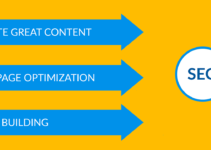In the ever-evolving world of search engine optimization (SEO), staying updated with Google’s core updates is crucial for maintaining and enhancing your website’s visibility. These updates can significantly impact your site’s ranking, traffic, and overall performance. In this comprehensive guide, we’ll dive deep into Google core updates, how they work, and what you need to do to ensure your website remains competitive.

What Are Google Core Updates?
Defining Google Core Updates
Google core updates are significant changes to Google’s search algorithm. These updates are designed to improve the accuracy and relevance of search results, ensuring that users find the most helpful and trustworthy content available.
How Often Does Google Release Core Updates?
Google typically releases core updates several times a year. While some updates are minor, others can be substantial, leading to noticeable shifts in search rankings. These updates are not targeted at specific websites or pages but aim to enhance the overall quality of search results.
The Impact of Google Core Updates on Websites
When a core update rolls out, some websites may see a boost in rankings, while others might experience a drop. The changes are driven by Google’s ongoing efforts to refine its understanding of user intent and deliver the most relevant content.
How Google Core Updates Work
The Mechanics Behind Google Core Updates
Google’s core updates involve adjustments to the search algorithm’s underlying framework. These changes can affect how Google interprets content, evaluates relevance, and determines the authority of websites. While the exact details of each update are not disclosed, Google often provides broad guidelines on what webmasters should focus on.
Key Factors Influenced by Core Updates
- Content Quality: High-quality, original content that offers value to users is always prioritized.
- E-A-T Principles: Experience, Expertise, Authoritativeness, and Trustworthiness (E-E-A-T) are critical components of Google’s ranking criteria.
- User Experience (UX): Websites that provide a seamless, user-friendly experience are more likely to rank higher.
- Backlink Profile: A strong, diverse backlink profile can positively influence your rankings.
- Technical SEO: Factors such as site speed, mobile-friendliness, and secure connections (HTTPS) are essential.
The Role of Artificial Intelligence in Core Updates
Google increasingly relies on AI technologies, like BERT (Bidirectional Encoder Representations from Transformers) and MUM (Multitask Unified Model), to understand the nuances of language and user queries better. These AI-driven components play a significant role in how core updates shape search results.
How to Prepare for and Adapt to Google Core Updates
Best Practices for Staying Ahead
Adapting to Google’s core updates requires a proactive approach. Here’s how you can prepare your website:
Focus on High-Quality Content
Content is king. Ensure your content is original, well-researched, and provides significant value to your audience. Use the following tips to enhance content quality:
- Understand User Intent: Tailor your content to meet the specific needs and questions of your audience.
- Use Clear and Concise Language: Avoid jargon and ensure your content is accessible to a broad audience.
- Incorporate Visuals: Images, videos, and infographics can make your content more engaging and informative.
Strengthen Your E-E-A-T Signals
To rank well after a core update, your website must demonstrate strong E-E-A-T signals:
- Showcase Author Expertise: Clearly indicate the credentials of your content creators.
- Build Authoritative Backlinks: Earn links from reputable websites in your industry.
- Enhance Trustworthiness: Ensure your website is secure (HTTPS) and transparent about data practices.
Optimize for User Experience (UX)
User experience is a key factor in Google’s ranking algorithm. Here’s how to optimize UX:
- Improve Page Load Speed: Use tools like Google PageSpeed Insights to optimize your site’s loading times.
- Enhance Mobile Usability: Ensure your website is responsive and offers a seamless experience on mobile devices.
- Simplify Navigation: Make it easy for users to find the information they’re looking for.
Monitor and Analyze Performance
After a core update, it’s essential to monitor your website’s performance closely. Use tools like Google Analytics and Google Search Console to track changes in traffic, rankings, and user behavior. If you notice a significant drop in performance, conduct a thorough audit to identify potential issues and areas for improvement.
Case Studies: Websites That Thrived Post-Update
Success Stories and Lessons Learned
To better understand the impact of Google core updates, let’s explore some case studies of websites that thrived after recent updates.
Case Study 1: AIAVENUE.NET
After the March 2024 core update, Example.com saw a 30% increase in organic traffic. The site focused on:
- Revamping Content Strategy: They conducted a content audit and removed outdated content while enhancing existing pages.
- Building Authority: They pursued high-quality backlinks from industry-leading sites.
- Improving UX: They redesigned their website to improve navigation and mobile usability.
Case Study 2: Espacioapk.com
SampleBlog.org experienced a significant ranking boost after the June 2024 core update by:
- Focusing on E-E-A-T: They showcased the expertise of their authors and provided transparent information about their editorial process.
- Enhancing Technical SEO: They fixed technical issues, improved site speed, and optimized for mobile users.
- User-Centric Content: They created content that directly addressed user queries and provided actionable insights.
Conclusion
Navigating Google Core Updates Successfully
Google core updates are a critical aspect of SEO, and staying ahead of them requires a strategic, informed approach. By focusing on high-quality content, optimizing for user experience, and adhering to E-E-A-T principles, you can protect your website from potential downturns and even benefit from these updates. Remember, the key to success lies in continuous improvement, staying informed, and adapting to the ever-changing digital landscape.



